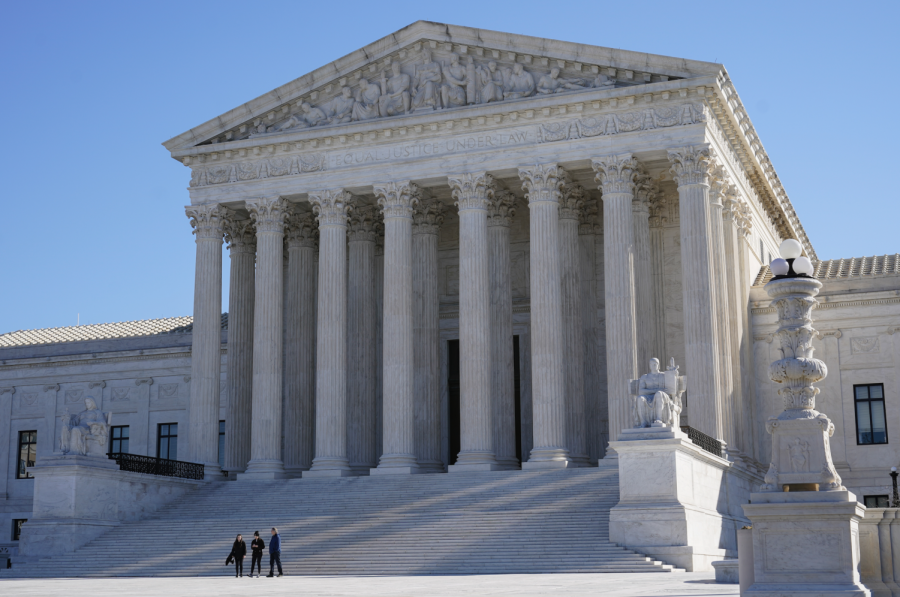The Supreme Court Rightfully Takes On Affirmative Action
The Supreme Court is slated to judge an appeals case brought on by Students For Fair Admissions (SFFA), a conservative student advocacy group which objects to the use of race as a factor in college admissions, challenging the legality of race-preferential admissions at Harvard University, as well as the University of North Carolina (UNC). By challenging a private and public college simultaneously, SFFA hopes to dismantle affirmative action in higher education.
Historically, the Supreme Court has upheld but tailored the use of affirmative action whenever it has weighed in on the issue. In 1974, the Supreme Court ruled in Regents of the University of California v. Bakke that affirmative action as a whole was legal, but that the use of specific racial quotas was not. The court narrowed the use of affirmative action again in 2003 in Gratz v. Bollinger by striking down the University of Michigan’s points-based admissions policy, which awarded points to applicants on the basis of race. Undergirding these decisions is the court’s view that any affirmative action in higher education must satisfy the judicial standard of strict scrutiny, meaning that use of racial preferences in admissions must further a compelling state interest and be narrowly crafted to support that interest.
Current legal precedent holds that building a diverse student body is the only compelling state interest which justifies the use of race in the admissions process. In other words, the legal justification for affirmative action rests on the idea that having a racially diverse student body is necessary to strengthen the quality of the education that is being offered. Legally, the onus is on the higher education institutions to demonstrate that their affirmative action policies are precisely fashioned to meet this end.
This constrictive legal framework obscures the essence of the debate over affirmative action. At the heart of this issue lies the plight of minority students, who are grouped into buckets and judged because of their race — a factor no one can control. Admission offices then engage in social engineering, where individuals are inevitably reduced into racial statistics that end up being marketed by the school to showcase their diversity. This shallow way of imagining diversity only sees the skin, barely acknowledging the inner diversity within us all. Applicants are assessed not on their merits, individuals with a combination of characteristics and convictions completely unique to themselves, but judged as stereotypes related to their racial group.
Young Asian Americans familiar with the college admissions gauntlet know the perils of such thinking firsthand — often, the admissions process blatantly discriminates against them. Previously opaque admissions processes at Harvard, brought to light by SFFA’s lawsuit, reveals clear discrimination against Asian students in particular. At Harvard, Asian applicants were consistently given lower personality scores than other racial subgroups by the admissions office, even though alumni interviewers gave them statistically similar personality ratings to other racial groups. The most striking example of discrimination against Asian students stems from how Harvard allocates its invitations to apply in “Sparse Country,” a term Harvard uses to describe states that typically send fewer students to Harvard. White high school students in these areas receive a letter encouraging them to apply if they score a 1310 or above on the PSAT; Male Asian students who received the letter had scores over 1370. Under these standards, Harvard expresses interest in the wealthy white male student with a 1310 PSAT score, but disregards the immigrant Asian male student from a working class background with a 1370. To Harvard, the difference that matters between these two students is not their class, immigration status or even which student scores higher; the only difference that matters to them is their skin color. This is racism, plain and simple.
For far too long, colleges have not treated minority students seriously or equally, opting to treat them as window dressing for their promotional materials — all while insulting them with the idea that they must satisfy different standards than white students to deserve admittance. Today, the Supreme Court, which has seen its composition change drastically since the last time it ruled on affirmative action in college admissions, has the chance to reimagine the entire college admissions process. If the Supreme Court finds the courage to act, they should require colleges to undertake the challenge of truly assessing students as individuals and not as units of a racial group.
My position is not borne from a sense that discounts the unique challenges that different minority groups face. There is something profoundly distinct about the African American experience compared to the Asian American experience, just like how moving through the world as a woman will never be the same as moving through the world as a man. We should acknowledge the fundamental truth that identities make a difference in life, but we must not concede to the reductive politics of classifying and valuing people based on the color of their skin. Everyone is unique in their own way; everyone has something special to add to society and everyone deserves equal respect. No one should have to endure the humiliation that comes with being racially typecast.





